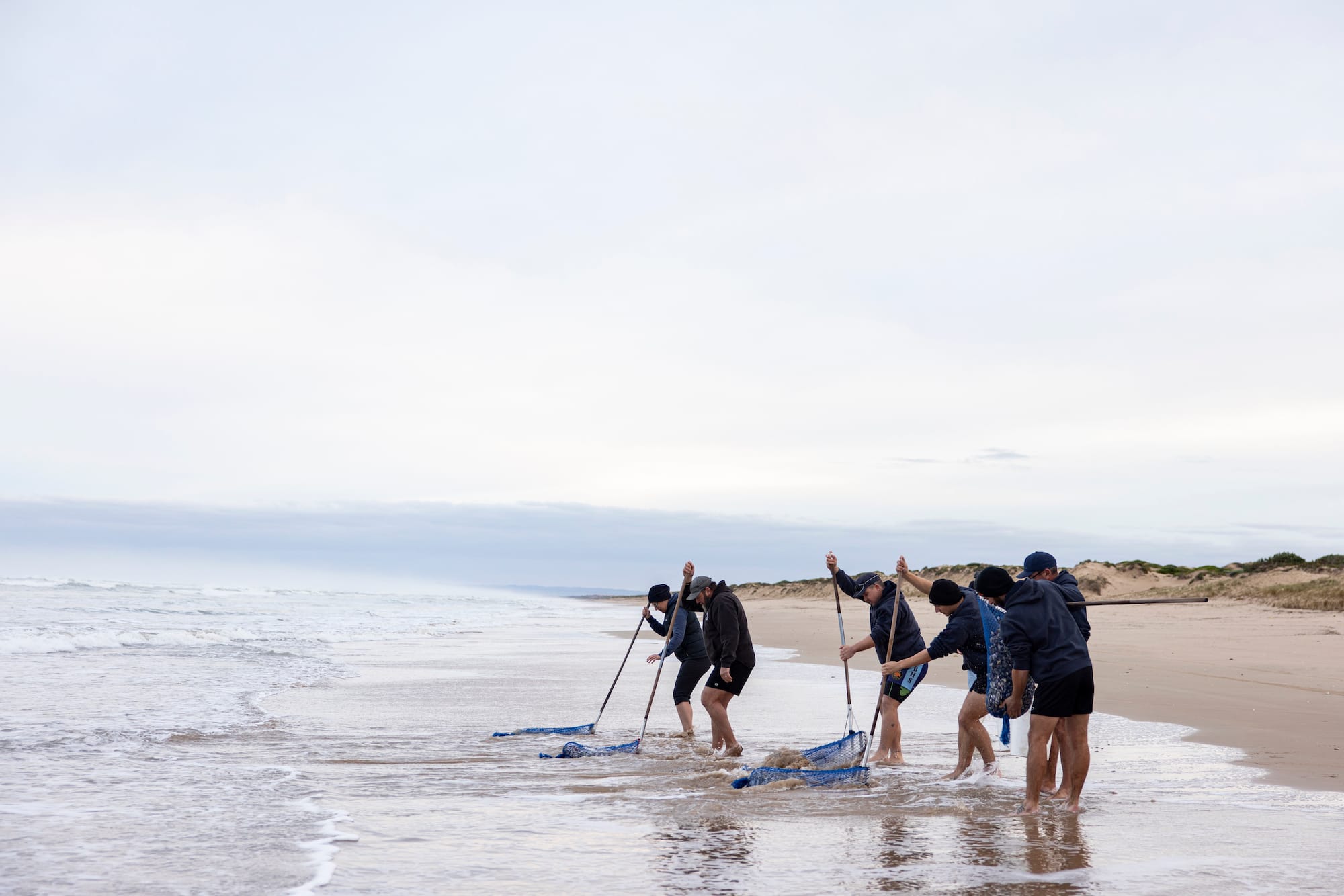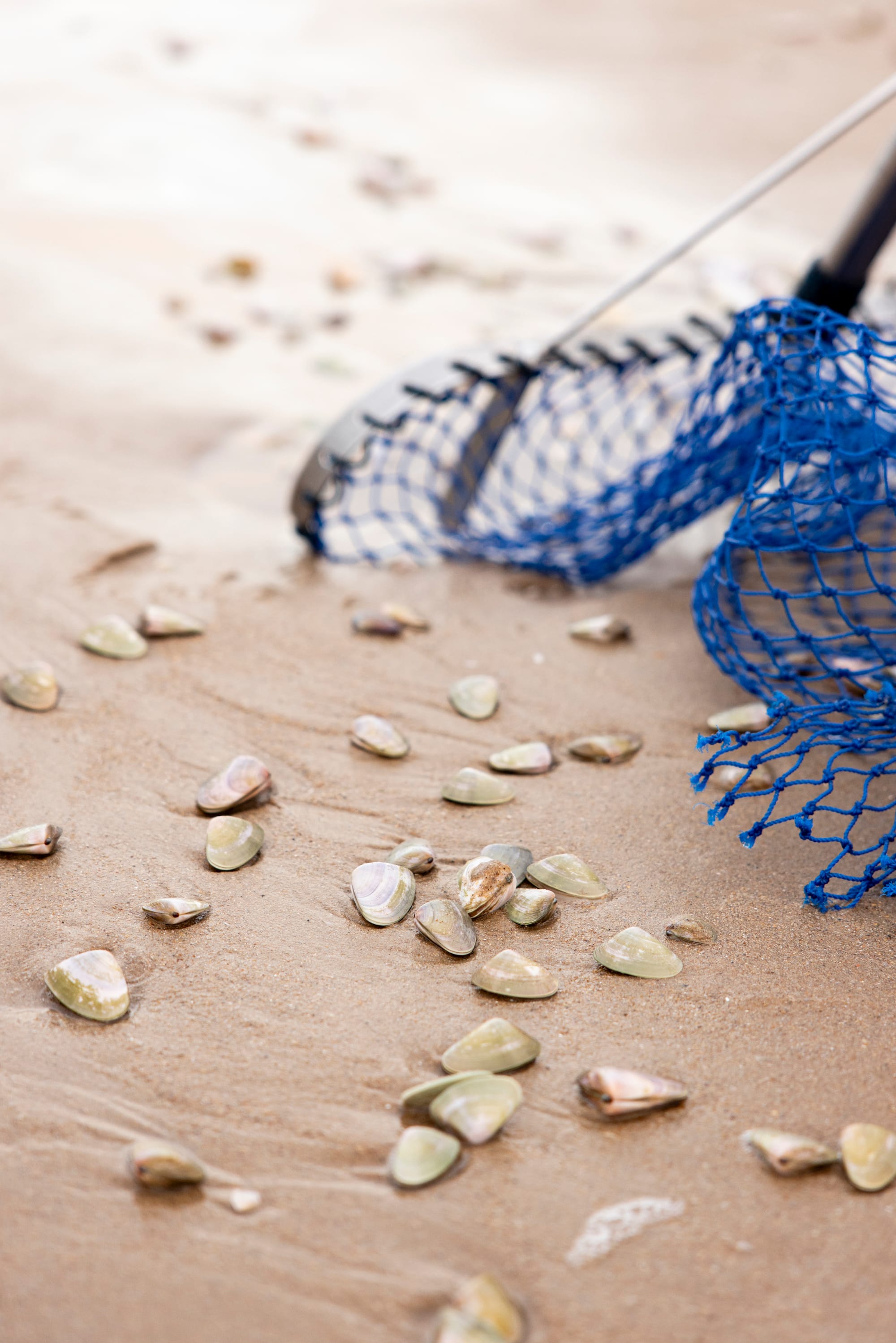
Using their heels as pestles and their feet like paddles, the cockle hunters of the Coorong gather by the Southern Ocean at dawn to do the “pipi shuffle”.
THE cluster of timber shacks among the dunes is a frontier camp, a place of hard yakka and make-do. Two crews of five have assembled here, arriving by boat in the pre-dawn starlight; they’re loading buckets and rakes into utes, joking and appreciating the small window of fine weather.
The winter air temperature is around four degrees and the crews are rugged up in jackets and beanies. Below the belt, however, they’re dressed for work—which means shorts and bare feet.
“I’ve been doing this since I left school at 14,” says Darren Hoad. He does some sums in his head: “That’s 43 years. Too old to be doing it and too stupid to give it up.” After years of being salt-cured, air-dried and sun-scorched, Hoad looks a resilient sort of bloke, but he admits the winter months are increasingly hard. “The cold’s getting to me,” he says. “From June onwards, the ocean slowly cools and the sand begins to feel like you’re standing in ice.”


Hand-harvested Goolwa pipis, also known as cockles or kuti, in the language of the Ngarrindjeri. Photography Kelsey Zafiridis.
Hoad’s feet are the tools of his trade. His soles are thickened, his heels are hard as iron and you’d swear his ankles are muscled—perfectly formed for digging out the Goolwa pipi, also known as a cockle or, in the language of the Ngarrindjeri, a kuti. Scientifically speaking it’s Donax deltoides, the edible saltwater clam that’s endemic to Australia and increasingly prized by Australian chefs.
By 6.45am, Hoad is at the wheel of a Land Rover Defender ute, leading a convoy of vehicles through the dunes. For half a kilometre, the headlights pick gaps through the sage-coloured scrub on soft sand trails. Then, just as ruby-coloured light begins to leak from a fissure in the clouds, the vehicles emerge onto a panorama that is big, open and raw.